Buckwheat soba noodles are healthy and easy to prepare, but what is in that dipping sauce they come with at Japanese restaurants?
The answer can be found in The Japanese Kitchen by Hiroko Shimbo which is where I found the info below:
Traditional Soba Noodle Sauce
The traditional sauce is called “tsukejiru” in Japan and is made of 2 things:
- Kaeshi – A mixture of soy sauce, tamari, and sugar that is made a week ahead to let the flavors meld. Traditionalists require this melding time.
- Dashi – A fish broth made of bonito flakes, kelp, and water.
These two items are then heated together with additional bonito flakes to make the final sauce.
Make it Quick ‘n Easy
Goal: A homemade soba noodle dipping sauce that tastes better than a store bought version that is quick and easy to prepare.
This recipe eliminates the time required for the traditional melding of soy sauces and dashi broths into a one-pot version that can be eaten the same day.
This is accomplished via:
- Mirin – for the sugar component that has additional flavor from the alcohol
- Soy sauce – for the savory component
- Bonito flakes – for the fish flavor component
Since mirin contains alcohol, it is simmered with water for about a minute to burn off the harsh alcohol flavor. You need the water to thin out the sauce.
Then soy sauce and bonito flakes are added. This should steep for about 10-15 minutes before straining and cooling completely.
Make it Vegan
To make this vegan, you substitute a rich shitake mushroom and kelp stock instead of water.
Are buckwheat soba noodles gluten free?
Buckwheat, by itself, is not a grain. Since it doesn’t have gluten, it is difficult to stretch into a noodle.
You can find 100% buckwheat soba noodles, however, many manufacturers will add some wheat or yam starch to make the dough pliable. This also results in a chewier noodle.
Buckwheat flour is also more expensive so adding other starches makes it cheaper to produce.
More buckwheat flour will result in a darker, nuttier noodle, and you can compare the color of the noodles in different brands to see how much buckwheat it actually has.
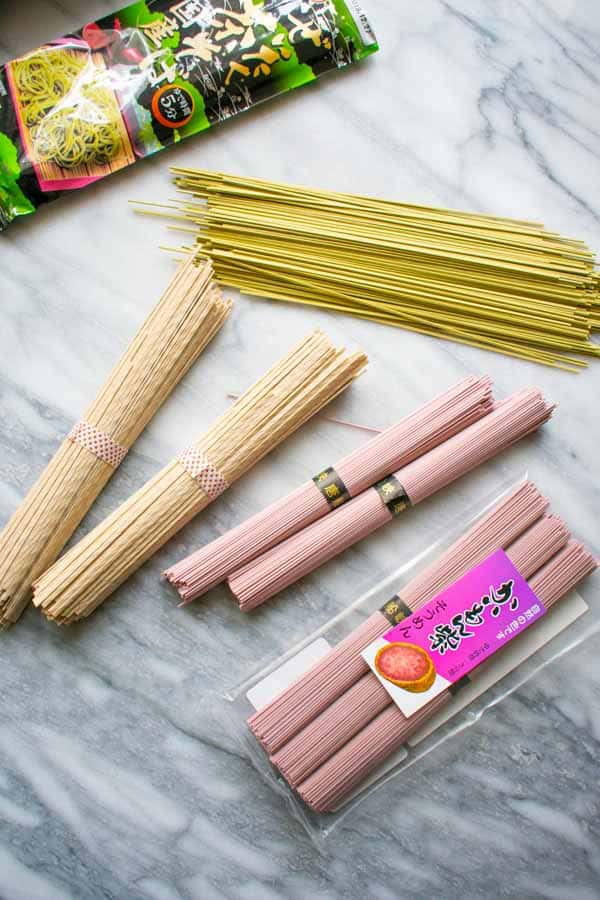
Soba noodles come in many other varieties besides buckwheat. There are green tea and purple yam varieties. Tri-color spaghetti anyone?
Eat for long life
This cold soba noodle dish is eaten on special occasions such as New Year’s Eve.
As in other Asian cultures, the long, thin noodles represent a long life with extended happiness.
These end of year noodles are called “toshikoshi” soba, which means “cross the year” soba noodles.
Traditional Serving Method
Soba noodles would traditionally be laid on bamboo mats to let excess moisture drain from the cold noodles.
They would be served with following accompaniments on the side to mix into your sauce bowl:
- grated daikon
- seaweed nori strips
- sliced green onion
- wasabi
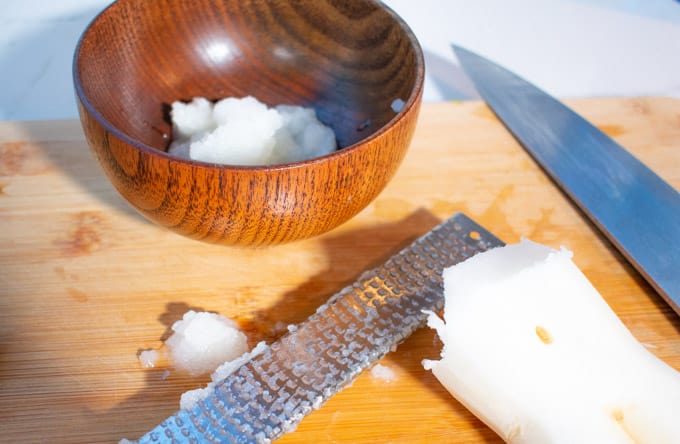
Grate daikon easily with a microplane grater. It achieves a fine texture that can be mixed into the dipping sauce bowl.
Cook soba noodles in about 5 minutes
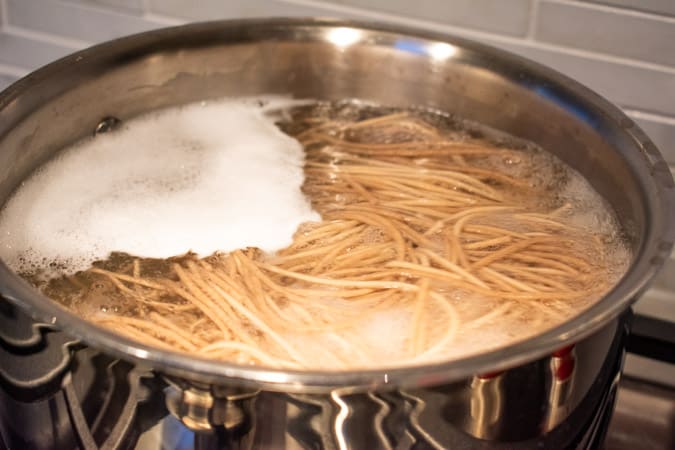
Soba noodles should be cooked in about 4 times the volume of water to noodle. Cook according to the package directions, usually only 4-5 minutes.
Save that Pasta Water
While many cooks would save the pasta cooking water for Italian pasta as part of the sauce, the cooking water from the soba noodles is actually saved and served in a tea pot.
It can be drunk as “tea” or mixed into the leftover sauce bowl for soup.
Cook ahead of time
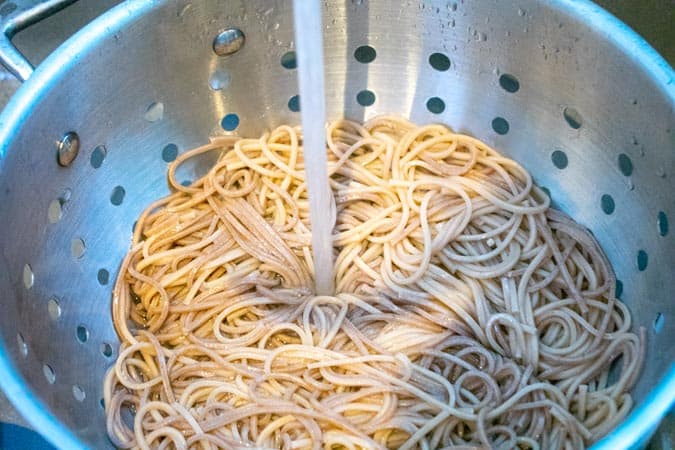
Run the soba noodles under cool running water with some ice if available. Because buckwheat does not contain gluten, the noodles don’t get so sticky like regular pasta and will remain separated.
Because it contains less gluten than Italian pasta, the soba will not get too sticky.
You don’t need to add oil to the noodles to keep them from sticking after cooking.
Instead, leave them to drain the colander and refresh with cold water to loosen before serving.
They can also be left in the refrigerator, covered, for a few hours.
History of Buckwheat in Japan
The Chinese introduced buckwheat to Japan, and by the 8th century, Japan was growing buckwheat along with rice and millet.
Buckwheat soba noodles first appeared in the late 16th century and have since become a fast food staple.
It looks boring, why would you eat it?
Buckwheat soba noodles are favorite among the busy lunch time crowd in Japan. They are cold and can be slurped down quickly (and very loudly).
Loud slurping is so common in Japan and not at all a sign of poor taste or manners.
To be honest, I never quite understood this dish until I ate it in Japan, in a noodle shop that specialized in these buckwheat noodles.
Hearing the slurping around me and mixing in the wasabi, daikon, and nori into noodles, it had a refined simplicity that is so emblematic of Japanese culture.
There is no meat or vegetables on top. They are just kind of naked.
But that also means they are EASY to cook, and we love EASY (and dare we say authentic?) meals!
Tips to make it better @home
- You can cook soba noodles a few hours ahead of time. Store in the refrigerator and refresh with cold water before serving to loosen the noodles.
- You do not need to toss the cold noodles with oil to keep from sticking. Buckwheat does not have gluten, so they are not very sticky noodles.
- Not all buckwheat soba noodles are gluten free. Some have wheat starch added to make the noodles more stretchy and pliable.
- For a traditional serving method, you can save the soba noodle cooking water. Serve as tea after the meal or mix into the leftover sauce to drink as a soup.
- To make this vegan, use 2 dried shitake mushrooms and a 1″ square of kombu instead of the bonito flakes. Increase the 1/2 of water to 3/4 cup water.
- Make sure the noodles are well drained before serving. You don’t want them noodling in a wet puddle!
More Quick ‘n Easy Recipes
Garlic Noodles with Extra Special Garlic
Quickest, Coolest Japanese Tofu Salad
Cold Soba Noodles with Homemade Dipping Sauce
Ingredients
- 4 bundles buckwheat soba noodles about 19 oz of noodles
Homemade Dipping Sauce
- 1/2 c mirin
- 1/2 c water
- 1/2 c loosely packed bonito flakes
- 3 Tb soy sauce
Garnishes
- finely grated daikon
- wasabi
- shredded nori seaweed strips
Instructions
- Bring a pot of water to a boil. Add soba noodles and cook according to package directions, about 4-5 minutes. Drain and cool with cold running water or ice.
- Bring 1/2 c mirin and 1/2 c water to a boil. Simmer for 30 seconds to remove the alcohol. Turn off heat and add bonito flakes. Let sit for 10 minutes. Strain and add soy sauce.
- Serve noodles and dipping sauce in separate dishes. Add garnishes as desired.
Notes
- You can cook soba noodles a few hours ahead of time. Store in the refrigerator and refresh with cold water before serving to loosen the noodles.
- You do not need to toss the cold noodles with oil to keep from sticking. Buckwheat does not have gluten, so they are not very sticky noodles.
- Not all buckwheat soba noodles are gluten free. Some have wheat starch added to make the noodles more stretchy and pliable.
- For a traditional serving method, you can save the soba noodle cooking water. Serve as tea after the meal or mix into the leftover sauce to drink as a soup.
- To make this vegan, use 2 dried shitake mushrooms and a 1" square of kombu instead of the bonito flakes. Increase the 1/2 of water to 3/4 cup water.
- Make sure the noodles are well drained before serving. You don't want them noodling in a wet puddle!
Nutrition
P.S. Do you love long life noodles? Please spread the Asian ♥ and share!
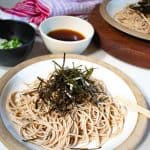
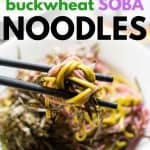
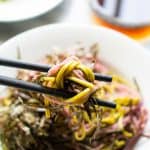
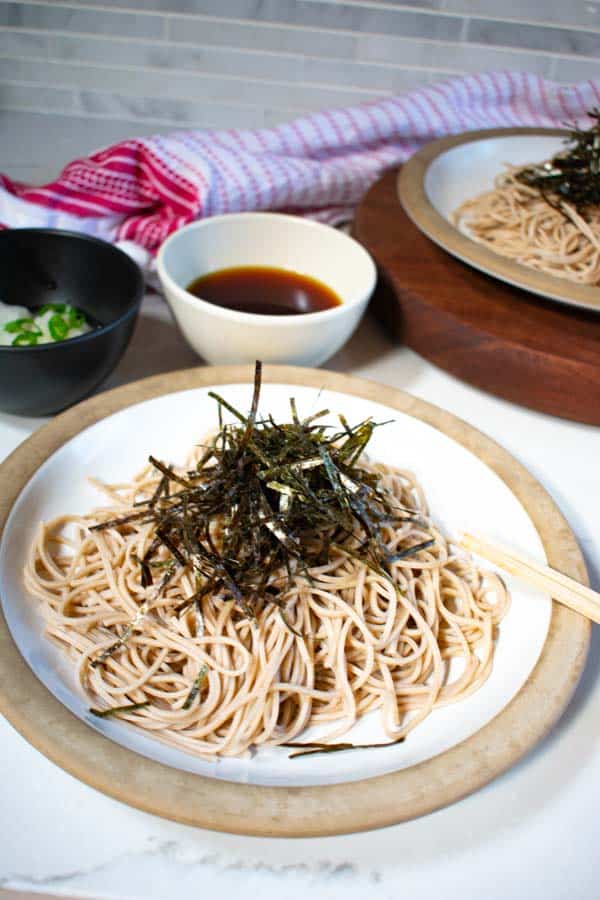
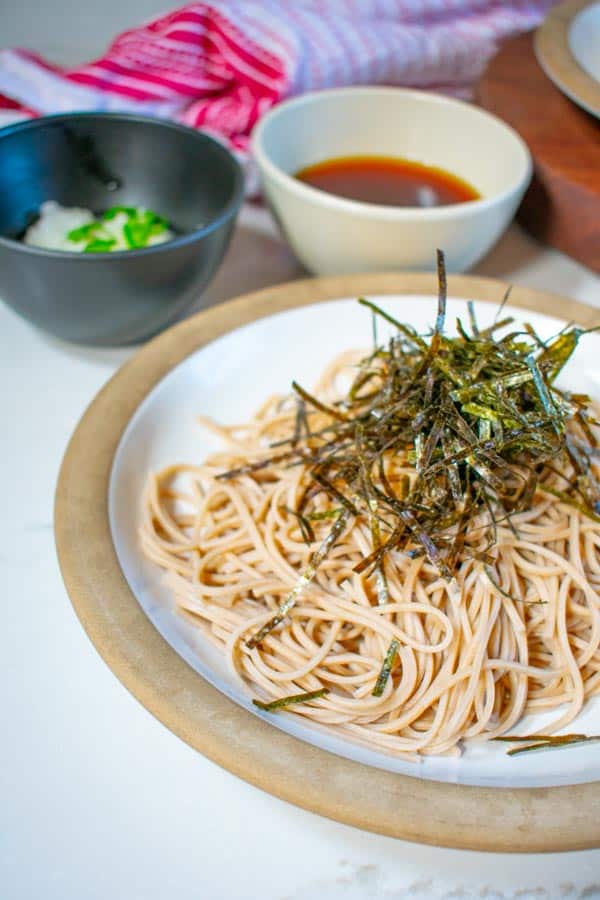
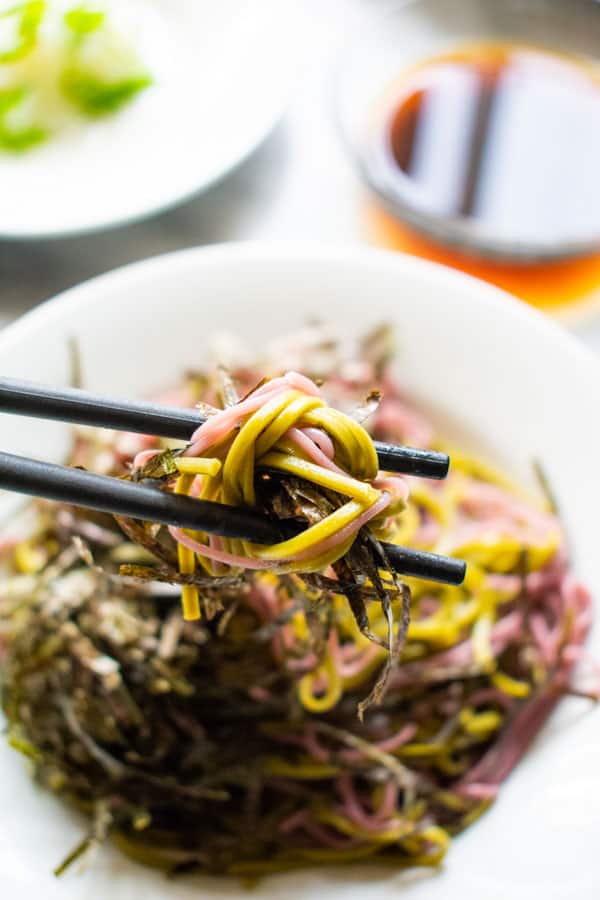
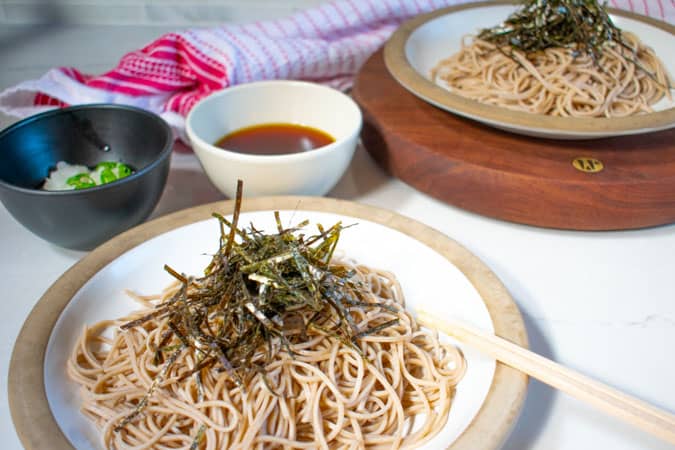
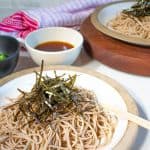

Leave a Reply